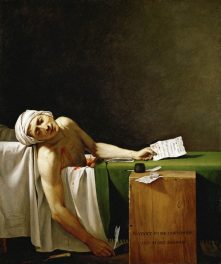[dropcap style=”font-size:100px;color:#992211;”]M[/dropcap]any artists experience the withering put-downs of the critic, theorist or informed viewer; sometimes bolstering and bouncing back but often laughed out of their practice altogether. Foster’s thesis celebrated a different kind of artist (Richard Prince, Cindy Sherman) and there’s nothing wrong in that, but in so doing he also junked expressionism and its claims to authentic communication, perhaps pushing to far and stretching his logic to the point of absurdity.
In Part 1 Natalie Andrews set the context for her critical look at Hal Foster’s argument here she examines in detail the logic that underpins said argument and the possible alternatives to outright ironic detachment.
Foster’s argument
Foster opens his critique with an extended quote from Paul De Man a deconstructionist literary critic who is associated with a critique of authorial intent, this opening grounds Foster’s critique in deconstruction which seems a fitting framework from which his arguments can seek to undermine the authorial intent of the supposed expressionist artist and draw attention to two key notions. Firstly, Crucifixion deployed by De Man to stand for a kind of self-inflicted messiah complex and secondly naivety which De Man associates with the tragic disillusionment of the fictional character Candide, [1]
‘We know that our social language is an intricate system of rhetorical devices designed to escape from the direct expression of desires that are, in the fullest sense of the term, unnamable-not because they are ethically shameful (for this would make the problem a simple one), but because unmediated expression is a philosophical impossibility. And we know that the individual who chose to ignore this fundamental convention would be slated either for crucifixion, if he were aware, or, if he were naïve, destined to the total ridicule accorded such heroes as Candide and all the other fools in fiction or in life.’ (De Man cited in Foster, H. 1983)
Despite appearances, the art world is not a haven for Christs and Candides
This not only helps to frame Foster’s debate but also exposes an inherent fear of embarrassment; the supposedly deluded expressive messiah who crucifies themselves or the equally deluded expressive fool who has not really thought through their position and acts only because their ignorance allows them protection from the hard truths of the world.
This has two interesting implications, one being that both of these criticisms could be leveled at Van Gogh; the ex-preacher who crucified himself to insanity and who is depicted by his peer Gauguin as a madman churning out artworks.[2] The second interesting implication is that this opening elevates the Critic (both De Man and Foster are critics) into the superior position of knowledge in relation to the expressive artist who emerges as either a knowing fraud or naïve innocent. De Man is clear that total ridicule is the result of these positions.[3]
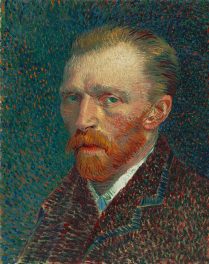
Christ or Candide?
Self-Portrait, 1887
Foster is quick to level this critique most squarely at painters as especially afflicted by the problem, ‘Despite appearances, the art world is not a haven for Christs and Candides: few artists trade in “unmediated expression,” though this is the issue over which many are said to contend. At one extreme are artists who suspect the very idea of expression; at the other are artists, mostly painters, whose passion seems earnest indeed.’ (Foster, H. 1983)
Neo-Expressionism
Foster goes onto describe Neo-Expressionism as a gestuary of largely self-aware acts further asserting in caustic terms, that to draw on German Expressionism is to take from second-degree image repertoires, or to be guilty of false consciousness because of a lack of understanding of the historical context of the development of certain forms,
‘Expressionism denies its own status as a language-a denial that is necessary given the Expressionist claim to immediacy and stress on the self as originally’ (Foster, H. 1983).
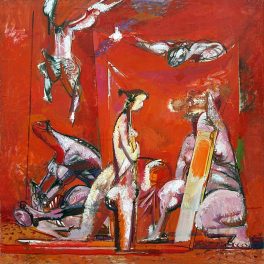
(A Typical example of Neo-Expressionism) Vasiliy Ryabchenko, Red room I, 1989
Evoking Adorno, Foster sees expressionism as a ‘false escape’ going on to state that we must ‘inquire again’ as the ways that Expressionism ‘simulates the immediate’. Foster sees Expressionism as a paradox which ‘asserts presence’ this is for Foster ‘by proxy’ via ‘indexical traces-the brush strokes’. Foster makes a comparison between classical works which hide the hand of the artist and the expressionist artist who seeks to accentuate these marks. For Foster, ‘…the expressionist is faced with a given (representational) paradigm, which he must cancel or supersede with a paradigm of his own.
Expressionist “immediacy’ then, is an effect-of a two-fold mediation.” (Foster, H. 1983) Expressionist immediacy is criticised quite generally here, although a discussion of time and training might help to understand more clearly why a work by a classical painter can be considered a more tightly controlled less spontaneous endeavour, the comparison is made in general, before moving onto contextualisation of Kandinsky and Woringer who Foster sees as having different ways of understanding the ‘two-fold mediation’.
A Formula of Lies?
Fosters point here is to establish Expressionism as a formula but more than this, one which is built on a lie ‘But this ‘monologue’ is an address, a formula-one that suppresses its rhetorical nature, it is true, but a formula nonetheless.’ (Foster, H. 1983). Foster’s description of a Classical paradigm which is necessarily suppressed and replaced by the expressionist paradigm is convincing although as aforementioned the notion of temporality or the shift from the academy to the studios by the Impressionists is neglected. To reason naively a Neo-classicist painting such as David’s The Death of Marat (1793) does display the characteristics that Foster associates with Classical works ‘The classical painter substitutes for things his representations of them,’(Foster, H. 1983) It also required a great deal of planning and months of labour to complete while the works of the Impressionists reacting directly against Neo-classicism in their context developed a style which could be applied faster and allowed for the representation of shifting light and atmosphere to develop, which could not emerge in Neo-classicist painting; not to mention movement and dynamism.
This does support elements of Foster’s argument, a direct confrontation here results in the replacement of one paradigm for another but Foster’s conclusions about a necessary lie weaken as he does not locate the beginning of this lie; who are the Expressionists who begin this lie or believe it? the later style of this way of working in painting has a history which grows through various movements, some discussion of this would help to understand when the extension of artistic vocabulary becomes a lie applied by Candide style fools and Charlatans.
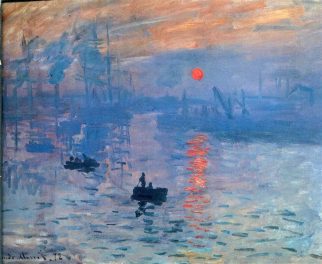
Impression, Sunrise Claude Monet 1872
An increase in the artistic vocabulary in the form of new languages is not difficult to accept as true although Foster’s entirely negative description of this as ‘second degree image repertoires’ (Foster, H. 1983) when referring to German Abstract Expressionism use or referencing by artists is unduly and purposefully nihilistic; secondly while new paradigms are created the paradox of expressionism as a style which must somehow deny its own development as a language to claim natural status is not as convincing.
This lie or fallacy appears to be a critique of an exceptionally naïve artist or audience member who imagines that more emotion or authenticity is present in a painting by Edvard Munch than by David, of course no less conviction or authenticity is behind either work; they simply deploy different emphasis and style to communicate their meaning. This naïve subject is not given a voice and specific examples of this lie would help to strengthen Foster’s argument.
Again Foster evokes De Man this time with reference to Nietzsche,
‘The whole notion of an “inner experience” enters our consciousness only after it has found a language that the individual understands-i.e., a translation of a situation into a familiar situation-: “to understand,” naively put merely means: to be able to express something old and familiar.’ (Foster, H. 1983)
Here the critique of expressive devices seems to shift to a more general negation of the subject as such, the self as fiction
Here Foster is reasserting his deconstructionist stance and his footnote 8 is a basic assertion of the deconstructionist truism, that Expressionism is a deferred desire, deferred always-to another sign, ‘This “translation” precedes, indeed constitutes, any formed expression so the “between” the self and expression a rhetorical figure intervenes. The adequations of self and expression is thus blocked-by the very sign of expression’ (Foster, H. 1983). Foster seeks here to show that the action of immediacy is flawed but again he does not quote directly any artist or theorist who asserts what he attributes to the liar or delusional practitioner, ‘The quest for “immediacy” is taken up in the belief that there exists a content beyond convention, a reality beyond representation-in short, a Nature opposed to Culture. This belief may well be the essence of Expressionism’ (Foster, H. 1983).
Examples of this mistake would be useful as its not clear if Foster is projecting this onto expressionists who themselves understood the rhetorical nature of their adopted or developed style and applied it as a choice. Foster does give examples of artists who don’t do this (Jasper Johns) and quotes from the historian Donald E Gordon who directly opposed De Man’s interpretation of Nietzsche. Foster evokes the unconscious contrasting the notion of the unconscious as a possible source in Expressionism to a reading of Lacan where the unconscious, ‘is seen to be “structured like a language” (Lacan), a language which in turn structures the self (precisely as it accedes to language),’ (Foster, H. 1983).
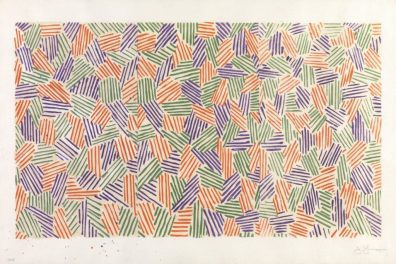
Scent 1975-6 Jasper Johns
This point again asserts that expressionism is another language that has no special relationship to a true self or natural form under the constructed cultural ones [4]. The thrust here is a repetition, first; show that expressive art is not a privileged medium but just another language and second; that worse, because of this expressionism is illegitimate or unable to admit this because it trades on a fake notion of the natural or a false notion of access to the unconscious (inner self) that it does not have. At this point Foster declares his own analysis redundant as he points to artists who are reflecting critically on the language of expressionism, Jenny Holzer is one,[5] ‘In “Eating Friends,” however, it is reversed: inner life is reduced to body parts, and “ex-pression” is strictly seen to be a fallacy.’ (Foster, H. 1983).
Cindy Sherman
Here the critique of expressive devices seems to shift to a more general negation of the subject as such, the self as fiction in relation to Cindy Sherman is evoked and a satirical, detached and ironic sensibility emerges as Fosters credible art, as opposed to the delusional expressionist types, ‘This is especially true of her recent “Pink Robe” series, in which Sherman seems to expose her own self but in fact exposes the type of the exposed self, in casual, confessional poses’ (Foster, H. 1983)
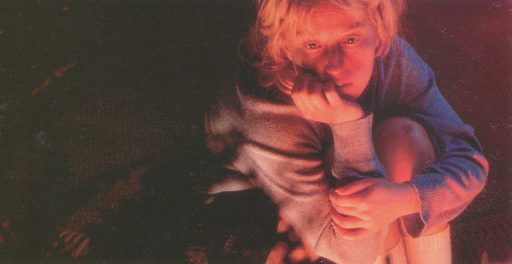
Cindy Sherman, Untitled No.88 1980 Colour photograph 61 x 122 cm
It’s clear that these images and many of Sherman’s works can be seen as her reflections on the difficulty of self expression since the idea of a ‘true self’ is a trope in our culture used to sell confessional books, images and offer fake insights into celebrity. Standing back from this, what is Sherman really saying? Does the work really attest that there is no true self or that an artist can’t reveal something, even if they want to? again these notions depend very directly on an assumed fool who cant see the oscillations of fashions in media representations and would be immediately convinced by a half naked celebrity posing in a bath, but does this person exist? If they do, does the relationship to the kind of photograph that Sherman references really mean there is nothing to confess.
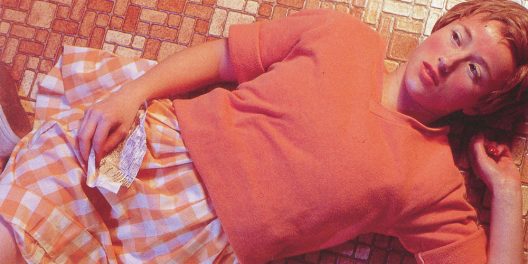
Cindy Sherman, Untitled No.96 1981 Colour photograph 61 x 122 cm
Firstly there are lies, things that we are all conscious of and that we wilfully hide from others because we understand that being revealed it would damage us this at least in one sense attests that there is a difference between the self one presents and the self which is guilty, could this not be called a ‘true self’ at least in some obvious way?[6] Does the commodification of confession, or the potency of faked intimacy in the media eliminate the categories of this duality?

Cindy Sherman, Untitled No.87 1980 Colour photograph 61 x 122 cm
Sherman’s work is not illegitimate neither is Richard Princes’ who is also evoked as exploring ‘control by simulation’ in his works, but the implication that these investigations teach us that there is no true self may be a stretch to far. Rather it would seem that any true self is still there but is changeable, inconsistent and unpredictable and is difficult to decipher or communicate in any given language; who is the subject called Cindy Sherman? Who makes so many anti portraits if not some true subject with many masks to hide behind, if there was only her own arbitrary changeability and inconsistency, would that not be a true self expressed in her body of work?
Just Another Product?
Foster now makes a curious manoeuvre when he attempts to compare expressionism generally with the calls of consumer society to ‘express yourself’ as its communicated by forces who presumably are interested in making money,
‘Express yourself, we are exhorted-but only via the type, only via the commodity. This expressionism thus has a social as well as an economic agenda, for expression is largely judged by authenticity, which in turn is largely judged by typicality- i.e. fidelity to sexual models, economic function, class position.’ (Foster, H. 1983)
The strange thing here is not just the denial of the social and political rationale of various expressionist artists; we might see this as Foster simply seeing these concerns as irrelevant in the face of the markets power to commodify their work [7], but his concept of authenticity as designed by typicality does not communicate well. Initially he seems to deny the development of certain forms in absolute opposition to ordinary life or convention as in the function of the early twentieth century avantgarde; the exact opposite could be the case where authenticity emerges in practice where what has become typical is overhauled or renewed or simply opposed (as we saw with Baudelaire). For Foster his reasoning sees “Submission and transgression are made equivalent,” (Foster, H. 1983) the detached cynical world view is reinforced where transgression is co-opted and eliminates the power of the outsider or marginalised minority to have agency. He concludes here,
‘Expressionism is thus seen to be specific language, authentic in its era (when subjective revolt as not yet absorbed) but ideological in our own. This is an important insight, for only insofar as it can deny its status as a language can Expressionism claim a transparency to reality and truth. Under the gaze of these artists, this a transparency opacifies and cracks,’ (Foster, H. 1983)
The assertion that expressionism is a specific language but one which now can not be legitimately used due to its co-option (absorbed is Fosters term) This is a key moment since for for Foster expressive language forms cannot simply be added to the canon of possible languages as expressionism must retain a ‘transparency to reality’ Foster’s insistence on this seems unreasonable, it relates to the paradox or fallacy of the title, the repertoire of possibilities in painting or other mediums is increased through: Van Gogh, Munch, German Expressionism and Abstract Expressionism. This is rendered pointless because of Fosters insistence, that unless expressionism is the direct line to a true self, which he doesn’t believe in, then the whole endeavour can only ever in 1983 onwards be credibly used to show up this lie.
Accident, Speed and Contingency
This reasoning seems to deny how really useful developments occur in art practices; for example the emergence of accident as a possible, positive aesthetic or aesthetic problem to be dealt with and included in the process of making emerges as a quality in painterly practices such as Hoyland’s; this is not possible in the works of Fosters ‘classical artists’ where accident would interrupt and destroy the vision which the classical artist is concerned; on the other hand if the treatment of painting had not moved through the practices of Impressionism, Van Gogh and Munch as well as the German Expressionists then the value of accident would not emerge in Abstract Expressionism as a quality. Accident in one of Van Gogh’s works would also damage his vision but because of the gradual increase in the importance of process in painting, on the importance of surface and gesture which is ‘mediated’ and developed gradually in these practices and movements, as a of this abstract expressionists are able to utilise accident in their works.
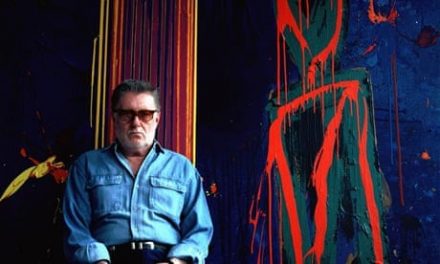
John Hoyland with his work.
Hoyland might apply with ‘authentic intent’ a mark or gesture, a plane of colour or basic shape with which he is not happy, or which does not do what was predicted, then edit this or allow it to remain working from that point onwards on an altered vision constantly subject to the contingent accidents possible in the medium. Treatment of those problems becomes the painting process. The struggle of intent and what happens, how to start and when to stop are what is evidenced in the works as well as any association we might have with colour, form or viscosity of paint.
The large canvas seen by Foster as an obvious affectation of the modern expressionist is also simply a space which allows the painter to make larger marks or forms which utilise the extension of an arm rather than the movement of only a hand; is that fake or pretentious? When a composer wants a drum to be struck gently is the sound less fake than when he wants is struck loudly?
So far there are various questions which occur in response to Fosters argument,
-
Temporality and Accident
Does the ability to start and finish work quickly via an aesthetic vocabulary that uses so called expressive marks and makes a space for the inclusion of accident not constitute a more ‘immediate’ kind of art making? If not, simply because I can begin and edit without worrying about refining marks or correcting accidental occurrences?
-
Fallacy and Deadness
Does the vocabulary of expressive marks really require a direct lie to function in the way Foster insists or is it simply possible to view this vocabulary as one which does retain legitimacy and extent to the viewers experience by virtue of the ways in which colour, gesture and surface are used to dramatic effect?
-
Hopeless Fools?
Were the artists responsible for the development of an expressive expressive vocabulary ever really identifying themselves as more; emotional, authentic or real and if they did does this only function in context and ruin what may be useful to a modern painter who Foster insists can only apply the vocabulary with irony and ignorance.
-
Selfhood and Autonomy
Is the notion of an autonomous self or true self negated by the works Foster deploys? Or do they simply complicate what is understood as a ‘True Self’ in the light of the shifts that have occurred in the understanding of subjectivity.
The main contention with Foster is not that Expressionism is another language which has been mediated and developed but that this fact renders it illegitimate and therefore false. Foster claims Expressionism communicates this lie only; it would seem that rather all art is equally expressive; a careful line or ironic statement is also expressive of a world view or attitude, that any type of art unpacks an argument.
Of course there would be no point in simply repeating old conventions and re-creating Van Gogh’s but those working in these cliched terms are surely not the focus of Fosters argument, he aims at the shamming of an entire language and to embarrass creators out of their sympathies, ‘ridicule’ frames the debate and in the intellectual circles of 1983 the notion of authenticity is giving ground to irony as the fashionable stance associated with authority which will rest with the critic whose detachment from the creative process privileges him/her in relation to the self mythologising of the artist.
‘Why the fear? Because I claim that when the ancients directly said ‘I love you, they meant exactly the same, all these distunciations were included; so, it’s we today who are afraid that if we were to put it directly, I love you, that it would mean too much. We believe in it,’ Zizek(2010)
A Suspect Fiction
In the final part of Fosters article, he considers the reasons why such a ‘suspect’ fiction is flourishing In ‘Neo expressionism’ his conclusions are as follows; ‘The art market is only one factor: it depends on the Doxa of the time and this (radically condensed) stills sees art as an individual retreat, a last refuge of humanism. In this view, the self, decentred in relation to its other languages, is sovereign in art’ (Foster, H. 1983). This ‘decentring’ is linked to what has been called the successive humiliations of man, Foster quotes Roland Barthes, Deliberations to evoke this and support his argument, the quote features as follows, “…psychoanalysis, the Sartrean critique of bad faith and the Marxist critique of ideologies have made “confession” a futility: sincerity is a second-degree Image-repertoire.” (Sartre, J. cited by Foster, H).
This is a powerful statement but the idea that sincerity is shown to be ‘second degree image-repertoire’ is misleading here, especially since the three frameworks evoked are not complimentary to one another. In relation to the language of expressionism marks and gestures might be employed by an individual in a highly controlled way which is how we might have always imagined it.
Does this sophistication in loose mark making, exaggerated colour or abstract form render the artist as insincere? It certainly does spoil the idea of ‘nature boy’ but the notion of an expressionist artist needing to be in a highly manic state in order to ply their trade has always been a myth, the first thing that any pundit, expert or historian does away with; this is especially true of Van Gogh one of the fathers of expressionism whose mythology can often get in the way of the intellectual and artistic rigour he employed to develop and practice his approach. In one sense working with the expressive vocabulary may well include this problem of mis-recognition.
We can surely accept that many artists would be irritated at being robbed of their struggle with techniques, composition, scale, editing and form to simply be called natural ‘nature boy(s)’ (Fosters term) This might be considered an occupational hazard of the expressionist style. We should also consider the spectators position if an ‘expressive’ artist employs marks and gestures in such a way to evoke an emotional response, the success or failure of that gamble is in the hands of the viewer who either reacts or does not; if the artist is highly self aware or if they believe themselves to be a more natural agent with greater access to a true self, does that really interrupt the audiences response to the work and render it invalid?
Thomas Demand
Sincerity or authenticity is not linked to the idea of a certain style but emerges in the relationship of the viewer with the work; we will look at this in relation to the work of Thomas Demands highly controlled and staged environments we will see that highly evocative and atmospheric works loaded with emotion are possible by utilising a highly controlled method, there are no expressive marks here but the result a ‘façade’ to some extent is staged for us to explore certain ideas. The expressive process is no different, its methods are employed to evidence a process, to evoke a response, it is no less ‘authentic’ to consider German expressive images or American pop art.[8]
Here the artist Demand is interviewed and discusses his practice and approach, the following offers some useful introduction to this,
‘Even though he uses photography, Thomas Demand (b. 1964) does not regard himself as a photographer, but rather as a conceptual artist. Very often a known image – published for example in a newspaper – is the starting point of Demand’s creative process. Taking the image as a point of departure, he then builds a three-dimensional model of it, very often using cardboard, adding or leaving out details present in the original picture. Then, Demand documents these sculptures through photographs, in the end destroying the sculpture, so that the photographs are the only thing left. Thus, in Demand works, reality is transformed several times. In the interview Demand explains his thoughts behind this method. In reality, Demand argues, all our memories are shaped by adding things and leaving others out.’ Louisiana Channel (2013)

Thomas Demand, Ruine / Ruin, 2017, C-Print / Diasec, 180 × 300 cm
The interview is called, Constructing the Authentic Demand talks about art showing us reality in ways which reveal new things to us ‘to see with new eyes’ as Demand puts it and the interview takes us through some of his historical interests and motivations. Demand emphasises the interpretation of the audience ‘my work must speak for its self’ and the emergence of authenticity for me seems to be one which is in the relation ship of the artist—work—viewer. Demand’s photographs of his models are highly evocative and seem to present history to us evacuated of its full weight becoming something that is filled up with our associations and experiences. There is a strong mediation on the idea of utopia and the consequences of creative acts.
The Motivation of the Artist
There is also the motivation of the artist and exactly what it is that their project is attempting to do; in this sense we might call Andy Warhol fake compared to Van Gogh’s genuine engagement and according to Foster we would be guilty of a humiliating and embarrassing simplification and we would be deserving of the ridicule which for both he and De Man also renders expressionism defunct.
This begins to feel like a semantic problem where the deconstructionist stance assumes ignorance and requires a whole list of qualifications in order to pass the ridicule test, so instead of saying Warhol is fake we might say; Andy Warhol is a bourgeois capitalist whose work, practice and public persona served the market and acquiesced to all of the oppressive forces of the market, that furthered his detached cynical celebrity obsessed persona and modelled a negative kind of behaviour to a wider public desperate for agents of change. By comparison Van Gogh’s project appears to be motivated by moral and spiritual concerns and we will see in relation to Jamesons analysis is more useful to us (cognitive mapping), so does the initial ignorant statement really deserve such ‘ridicule’ or is there something inherent in the deconstructionist method which is overtly pessimistic about what we mean when we speak.
For Zizek there is a tendency to ‘believe too naively’ in deconstruction using the example of Judith Butler he mockingly reverses the ridicule of the simple statement back onto the pseud who is paralysed by their supposed knowledge,
Transcribed from YouTube:-
‘Who believes what today? I think this is an interesting question much more complex than it may appear. The first myth to be abandoned is the idea that we live in a cynical era where nobody believes, no values and so on, and there was sometimes more traditional were people still believed and relied on some substantial notion of belief and so on.I think its today that we believe, more than ever and as Fannon develops it in a nice ironic way the ultimate form of belief for him deconstructionism. Why? Again I’m going back to that question of quotation marks; look how it functions deconstructionism in its standard version already at the texture of style, you can not find one text of Derrida without A: all of the quotation marks and B: all of the rhetorical denunciations….. take an ironic example, if somebody like Judith Butler was asked what is this (holds up a bottle)? She would never have said his is a bottle of tea; she would say something like if we accept the metaphysical notion of language, identifying clearly objects and taking all this into account may we not, she likes to put it in this rhetorical way, may we not not risk the hypothesis that in the conditions of our language game this can be said to be a bottle of tea. Always this need to distunciate. It goes even for love, nobody almost dares to say today I love you, it has to be, as the poet would have put it-I love you, as some kind of distance. What’s the problem here? The problem is that, Why the fear? Because I claim that when the ancients directly said ‘I love you, they meant exactly the same, all these distunciations were included; so, it’s we today who are afraid that if we were to put it directly, I love you, that it would mean too much. We believe in it,’ Zizek, in radekk76 (2010)
Meaning too much is linked to embarrassment for Foster, this is clear from his framing of the debate via De Man the ‘authorial self’ is just too great a joke for him to be deployed in anyway which doesn’t deserve mockery. The only artists who are immune to mockery are those who ‘distunticiate’ themselves from meaning and autonomy when they apply the languages they communicate in. For Zizek the distunciation, the ironic quotation marks, is the fake which imagines that a real believer exists elsewhere, it is the critic then who really believes in the expressive fool.
Whose Mistake is it Anyway?
This ‘distunciation’ misreads ‘direct’ languages or statements as meaning more than they ever did; expressionism, a direct way of handling and applying paint in this case is rubbished by Foster since he sees it as dependent on a myth of the artist at best only functional in its own time before it was ‘absorbed’ and that marks become nostalgic or ironic. The application of loose or what Foster means by Expressionist vocabulary simply allows a modern painter to utilise a different process and to contrast this with other (slower, more precise, realistic and so on) forms, the result need not be ironic but it is symbolic in the sense that all forms are; expressive marks do bunch together or indicate movement which carries the eye around in a different way to the methods employed by more ‘Classical’ artists but why should we be without these options?
Kiefer’s work (evoked by Foster negatively “Usually this simulation comes with masterpiece trappings-huge canvas, heavy frame, grand style, very heavy thematic” Foster, H.) do rely somewhat on these terms to create impact and direct the experience of the viewer.The presence of Sherman is no less apparent in her works than in Pollock, Picasso or Kiefer they are simply concerned with different things; when Sherman states,“I am not about revealing myself’ (Sherman cited by Hattenstone, S. 2011) she is never the less revealing herself in her obsessions and repetitions, in her body of work, just as every artist does. This logic is similar to Foster’s, if detachment and irony are deployed they depend on a clever distanced individual or a myth thereof in order to function. If we find that Sherman is a feeling person or sentimental who has warm relationships with her family and friends do we dismiss her as a fake-cynic playing it up for the audience, or worse deluded?

The Large Canvas’s of Kiefer come under fire. Anselm Kiefer – Let a Thousand Flowers Bloom, 1998
Foster continues to connect the ‘renewal’ or ‘suspect’ expressive language to a cult of individuality or ‘consumer of individuality’ and links the hunger for this to the ‘decentering’ of self,
‘Indeed, modernity has witnessed repeated decenterings of the self-in relation to society (Marx), the unconscious (Freud), language (Saussure), and the sign. Neo-Expressionism, then, occurs as one more, belated attempt to re-centre the self in art,’ (Foster, H. 1983)
The idea of re-centring is seen as a doomed attempt by Foster and what exactly does this re-centring involve? Foster here appears at his most nihilistic and his earlier appropriations of Nietzsche seem false; Nietzsche did not want to traumatise individuals with paralysing insight he wanted people to create meaning and Will it into a potent robust set of values isn’t Zarathustra ‘the bridge’ that he imagines as precisely this re-centring after ‘the death of God’ a re-centring aiming at his much mis-appropriated Uber mensch.[9]
The Depths of Creative Hopelessness
Fosters final words are revealing of the depth of his hopelessness in relation to, not expressionism but the human subject itself,
‘For the very gestures that insist on the presence of the historical, the real, and of the subject testify to nothing so much as desperation at their loss.’ And ‘idolatry, a fascination with a false image that mimics the presumed attributes of authenticity when it is in fact just the hollow mask with which a frustrated, defeated consciousness tries to cover up its own negativity.’ (Foster, H. 1983)
For Foster there is no way for a person born after expressionisms initial development to mean the same thing when they apply expressive terms as it no longer means as much as it once did; this is reminiscent of Zizek’s critique of deconstruction in general, ‘love’ was something more in the past and its fraught with exceptions and ‘distunciations’ because of our cynical time which robs us of our ‘values’. The ‘defeated consciousness’ for Foster desperately covering up its own negativity is again telling. Shame is key here. Why is the ‘negativity’ not a radical creative negativity inventing forms to elaborate and construct the world? Why a ‘hollow mask’? the terms are theatrical to say the least; they are put in such terms to embarrass us out of our sense of autonomy and they are rhetorical reenactments of shame and embarrassment.
This pessimism lays the ground for an absolute truth in which the ‘expressive’ artist stands for the ‘defeated’ human in their meaningless world, the problem here is not accepting some of Fosters insights but in accepting the definite nature of the stable, concrete reality he believes in. Reality is a far more contingent affair the negativity he describes is necessary for creativity to function or nothing would change. Consider instead the concept of ‘becoming’ a temporal condition which embraces change here evaluated by Deleuze,
‘I became more and more aware of the possibility of distinguishing between becoming and history. It was Nietzsche who said that nothing important is ever free from a ‘nonhistorical cloud.’ […] What history grasps in an event is the way it’s actualized in particular circumstances; the event’s becoming is beyond the scope of history. […] Becoming isn’t part of history; history amounts only to the set of preconditions, however recent, that one leaves behind in order to ‘become,’ that is, to create something new.’ Deleuze (1995:171-172)
Deleuze here is certainly more appealing his view leaves open the space for the present as a site for possible ‘becoming’ a temporal condition acted out in the moment; lets leave behind Fosters deadlock so dependant as it is on historical conditions to fix past artists in the amber of their own strategies.
Concluding
The Expressive index does offer artists another tempo to work at where they can contrast the tension of slow careful marks with fast sloppy ones if they wish, to build tension or elaborate ideas; more over the inclusion of this vocabulary allows chance and accident to play a role in the making of artworks which are certainly used in the work of many Abstract Expressionists.
The most radical redefinition of Foster’s ‘fallacy’ is to assume its central problem, the flawed authorial subject, as the very core of an approach to practice but one which does not fall into the defensive reactionary trap of irony
The idea of a defeated and shamed subject desperate to cover up ‘its own negativity’ (Foster 1983) is an irrationally pessimistic statement about our consciousness which can easily be re-phrased to produce a positive staging of this supposed fact,
*A fully empowered subject who draws on its own negativity to act; released from the restraints of the belief in its wholeness and so able to change and change back. The shamed subject covering up in a hopeless situation is the same as the free subject creating meaning in a radically open situation.
Vitality and Renewal
What is evidenced from Baudelaire and Foster is a cycle of renewal which is witnessed by the critic, but which is fought out among artists of differing practices; there is no natural victor. what is ‘dead’ or ‘vital’ in art practice is so due to the artists action (and skill) in the present and the reaction of the audience to artworks (things can be re-animated so to speak if circumstances in the present change).
The fallacy of Fosters title is a construct that finds a limited place in reality; it’s a rhetorical device projected onto a necessary fool, the self-mythologizing painter (who is not evidenced appropriately) and who is the scapegoat for modernisms failure to initiate a Utopia. Foster is simply a pessimist in an open situation. It’s true that expressionist artists don’t have a special relationship to reality (nature boys) but it’s also true that practitioners would be happy to accept this in favour of recognition of their rigour in the creative process.
The idea of authenticity is an approximate term like any in language we can play games by saying a person is an authentic Charlatan (Warhol) or an authentic Cynic; in the end Foster’s claim that expressionism is a ‘mediated’ approach is true, the use of this expressionist vocabulary as a part of a non-ironic project though is not impossible and the risk of simply repeating cliches and effectively speaking through a dead language is not a certainty but the risk any artist takes when they make work.
A better rendering of the artist’s activity can be found in Griselda Pollock’s short book ‘Killing Men and Dying Woman’ (1996) Pollock emphasises the body in time and the subject as a transitional entity (in between the now and the imminence of the next moment),
‘I would like to stress the place of the body…This phrase suggests that the body mediates between the experience of being in space and the process of painting from that memory of being in space, between resource and outcome, which is, however, not representation and not even reference. The painting body accomplishes this role as if it were itself both the instrument of the psyche and of the painter – replacing the brush or stick that replicates the look or feel of something in the world,’ (Pollock, G 1996:250)
Enter the Female Master
Pollock sees the position of the woman painter at the vanguard of this approach ‘Something different must occur if the painter who paints with such a body is, in fact a woman artist, painting from (or to find) ‘the creative woman’s body’ (Pollock, 1996,) Pollock is clear that the subject here is not a predefined one, there is no, ‘essential idea of what the body is’ and citing Julia Kristeva Pollock asserts that, ‘woman is not. Woman is not in the order of being,’ (Pollock 1996) This is important as it leaves open the room for discovery and a space, the void, which for Foster is so shameful; Pollock is clear she will have, ‘no truck with the expressive fallacy,’ (Pollock 1996) This distancing from Foster is important as the void must be preserved but seen as positive, ‘we must allow a space of possibility for the specificity of the feminine,’ (Pollock 1996)
The most radical redefinition of Fosters ‘fallacy’ is to assume its central problem, the flawed authorial subject, as the very core of an approach to practice but one which does not fall into the defensive reactionary trap of irony,
‘To go beyond modernist criticism is to defetishise and decommodify the gesture/signature/author complex by returning both to the labouring, producing body and to subjectivity – in process and on trial- in history, a subjectivity whose psychic and social practise the gesture indexes as it works across and within the representational space of its aimless signification. Instead of using painting as a metaphor, a substitution for the artist, rendering ‘him’ (as this logic demands) the symbol of art, we could explore the practice of painting, in social as well as symbolic space, as a metonymic trace, an index of a socially formed, psychically enacted subjectivity at work, both consciously and unconsciously, upon its own and its cultures materials,’ (Pollock, G 1996:252)
The description of the activity of the subject here is not restricted to ironic reflection and while the void is included it is seen as a positive force Pollock goes on to give some detail about a practice like this,
‘The Key to this process in the painting practices under consideration is to think through the possible relations between the gesture (not understood as mere formal device or technique, and not just as a way of putting on paint, but as the overall semiotic process of a specific context), the surface (not imagined as a flat support, but rather a territory, a field, a mirror, a screen), and the subject (not the coherence retrospectively attributed by the name of the author/artist, but a process, divided, heterogeneous, negotiating difference and the radical instabilities of identity).’ (Pollock, G 1996:252)
What Pollock warns against is exactly what Foster does, attributing a coherence to works which were always the result of such negotiations; Fosters subject is an ever-crystallising fake masking an empty centre, for Pollock the subject is a process and by extension the practice evidences (indexes) various moments in this process.
Notes
[1] Candide (Voltaire, 1759) has an unrealistically optimistic view of the world which is slowly and painfully destroyed via disillusionment.
[2] I am thinking here of Frederic Jameson’s assertions regarding Van Gogh in, ‘Post Modernism or the Cultural logic of late Capitalism,’ from 1984.
[3] The use of De Man as the opening of this argument may now be seen as embarrassing in its own right; five years later many papers exposing his anti-semitism were discovered, damaging his legacy considerably.
[4] In what sense then can we express this self, constituted by language if not through the languages which have constituted and extended the self? No sense of exactly what subjectivity Foster subscribes to is given but emerges later when he talks about a negativity to be covered up. The essay could be seen to put the concept of the self on trial with expressionism as the key evidence for the prosecution.
[5] This moment of self depreciation is a purely rhetorical device since the kind of artists who Foster deploys as themselves undermining expressionism are those who are heavily dependent on critics and the exposition offered by the then growing field of insider interpretation which guarantees Fosters position, also amusingly this claim of redundancy comes at one third of the way through Fosters argument which never the less continues for some time there after.
[6] An example from early life might include the many toddlers who having covered their bedrooms in paint then lie despite the obvious evidence of their guilt, what amuses us is the sophistication of a self at such a young age, able to recognising the advantage of hiding the truth with the lack of sophistication the child has in understanding they have been caught red handed; so in this sense we each have truths which we don’t want others to know about and this constitutes a front and the real child (the one who made the mess and wanted to)
[7] This may be an unfair criticism since the reach of capitalism is so great that we can assume there is no meta space from which to espouse them; in that sense Fosters critique is just as guilty as expressionist art in terms of commodification; For Zizek this strategy opens a fake safe space ‘I’m an old Hegelian. I hate the position of “beautiful soul”, which is: “I remain outside, in a safe place; I don’t want to dirty my hands.” In this ironic sense, I am a Leninist. Lenin wasn’t afraid to dirty his hands,’ (Zizek 2009) If expressionisms fake space is an emotional interior then Fosters is a rational one. The appeal to consumerism then by Foster is wrongheaded either both practices generate useful side effects or both are hopelessly trapped.
[8] A clear theory of spectatorship is lacking, the interpretation of the audience is marginalised in favour of the expert.
[9] Thus Spake Zarathustra (Nietzsche, F. 1883–1891) follows a religious motif at the level of style in that a profit like figure, Zarathustra seeks to espouse a new morality to people.

Natalie Andrews is an artist working with a range of mediums, she has shown her work at the Hoxton Arches in London and is currently working on a number of 3d works alongside painting exploring the links between painting and sculpture;
“I am interested in the way that we relate to one another and with space, how the environments we inhabit structure and dictate these relationships and create both opportunities for emancipation but also the deep alienation and separateness.”


